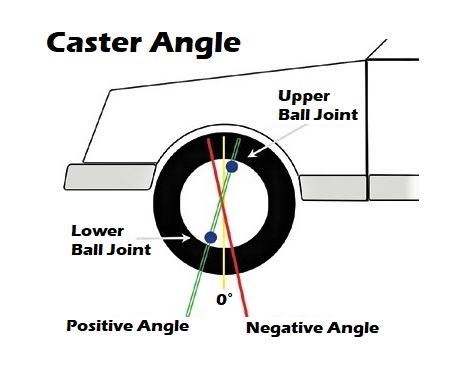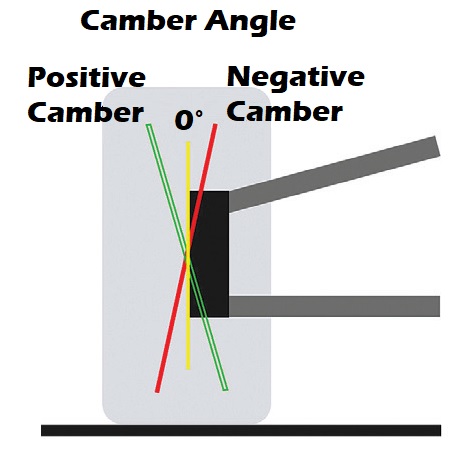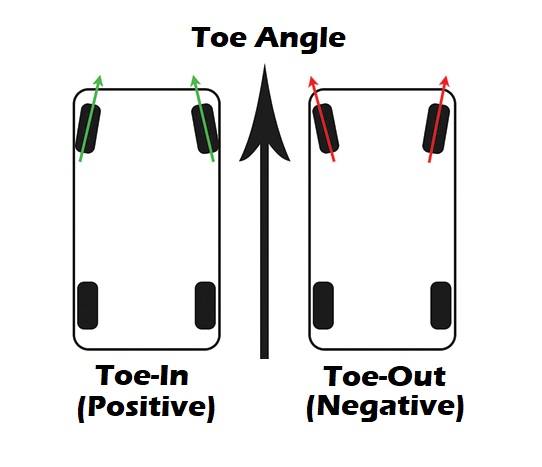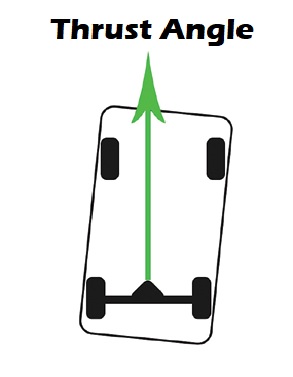Manufacturers establish alignment specifications for caster, camber, and toe angles to improve a vehicle’s handling, fuel efficiency, and tire lifespan.
If you make changes to your suspension, ride height, or even wheel offset, getting a proper alignment is essential to avoid handling issues. It’s important to remember that alignment specifications for a street car may not be optimal for a drag race or road course car.
For example, a drag car will benefit from an increased positive caster, creating “self-centering” steering at higher speeds, with improved stability and reduced rolling resistance. Adjusting the front camber and toe to account for suspension unloading during launch can improve steering control early in the run.
On a road course car, adding three to four degrees of negative camber and a small amount of toe-in promotes consistent tire temperatures with a better contact patch, quicker steering response, and improved oversteer (RWD) or understeer (FWD) correction.
Finding the alignment settings that work best on a modified or class-specific vehicle requires testing and tuning, but the payoff can be well worth the invested time.
Let’s look deeper at some alignment basics and how each setting affects your vehicle’s driving performance.
What is Caster Angle?

Measured in degrees, caster angle is the angle between the upper and lower ball joints (or upper strut mount) when viewed from the side. Positive caster is when the upper joint is behind the lower joint, and negative caster is when the upper joint is forward to the lower joint.
Adjusting a vehicle’s caster can affect its stability and cornering ability.
Added positive caster can increase stability by making the tires lean more during turns and naturally return to a straight position coming out of corners. However, too much positive caster will increase steering effort.
On the other hand, reduced caster can lessen steering effort but will decrease stability when driving straight. Rarely will alignment specs call for a negative or zero caster setting.
What is Camber Angle?

Camber angle is measured in degrees and can be positive or negative. With negative camber, the top of the tire leans inward toward the vehicle, while positive camber means the tire leans outward.
For better cornering traction, negative camber is preferred. Zero camber is recommended for optimal tire performance while driving straight, and positive camber is usually reserved for off-road vehicles to reduce steering efforts and improve maneuverability.
What is Toe Angle?

Toe angle is expressed in fractions of an inch. When the front of the tires points inward, it is a positive toe angle or “toe-in.” Conversely, when the tires point outward, it is known as a negative toe angle, or “toe-out.”
The toe angle works in conjunction with the camber setting to preserve a vehicle’s handling as suspension dynamics change. RWD cars use toe-in to account for the rolling resistance caused by the tires pushing back against the suspension, while FWD cars use toe-out to counteract front tire pull. However, too much toe can cause unstable steering and tire wear.
What is Thrust Angle?

Thrust angle must be aligned with the vehicle centerline. This ensures the vehicle travels in a straight line
and handles predictably.
***

Comments